
This image from ESA’s Mars Express shows the southern flanks of Ascraeus Mons, the second-tallest volcano on Mars. Credit: ESA/DLR/FU Berlin
The Mars Express spacecraft has revealed fascinating features on Ascraeus Mons, Mars’ second-largest shield volcano. The images depict areas of collapsed underground lava flows and sinuous channels, covering a 70 km area, contributing to our understanding of Martian volcanism.
Most everyone is familiar with Olympus Mons, the largest volcano on Mars and also the largest in the Solar System. But there are several other enormous shield volcanoes on Mars. The second largest is Ascraeus Mons, and new images from ESA’s Mars Express spacecraft reveal some interesting features on the side or flank of the mountain.
The images show regions where underground lava flows emptied out of chambers or tubes, which then collapsed into chains of craters. There are also smaller snakelike channels called “sinuous rilles,” which meander in a curved path like a river. They are commonly thought to be the remains of smaller collapsed lava tubes, but scientists are still unsure how they form. In all, these dramatic and large fissures on the lower southern flank of Ascraeus Mons — which are collectively named Ascraeus Chasmata — cover an enormous area of over 70 km (43 miles) across.
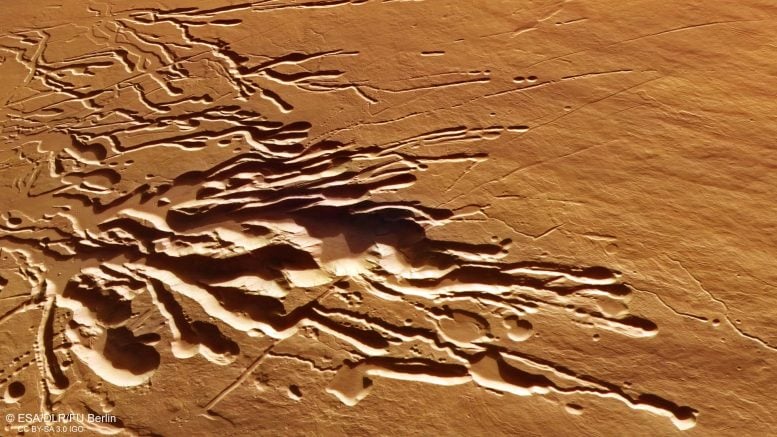
This oblique or ‘sideways’ perspective view shows the southern flanks of Ascraeus Mons, the second-tallest volcano on Mars.
Deep, irregular fissures in the Martian surface can be seen snaking toward the camera. These are part of a group of features collectively named Ascraeus Chasmata, which encompasses an enormous patch of collapsed terrain over 70 km across. The part shown here formed as strings of circular or near-circular depressions combined and coalesced to form troughs, causing the ground to collapse – a bit like forming a sinkhole. Credit: ESA/DLR/FU Berlin
Ascraeus Mons is the northernmost and tallest of three prominent volcanoes found in the Tharsis region of Mars, a volcanic plateau in Mars’ western hemisphere. Ascraeus Mons reaches a towering 18 km (11.2 miles) in height but its slopes are gentle, with an average incline of 7 degrees. This slow climb is reflected in the volcano’s huge base diameter of 480 km, giving it a footprint roughly the size of Romania on Earth.
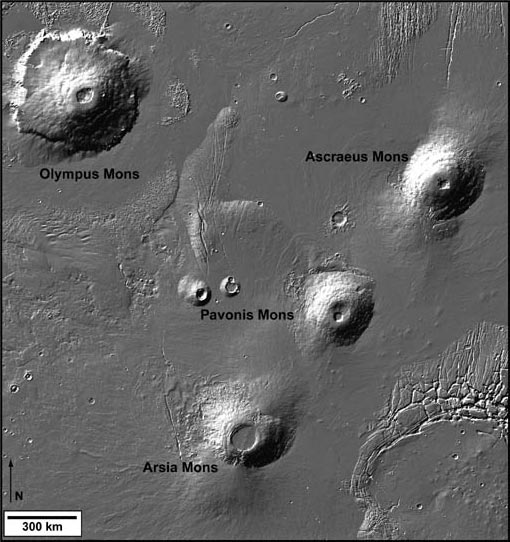
Martian volcanoes in the Tharsis region. Credit: NASA/JPL
Comparatively, Olympus Mons is 25 km (16 miles) high and 624 km (374 miles) in diameter, (approximately the same size as the state of Arizona). On Earth, Mauna Kea in Hawai’i has an elevation of 4,205 meters (13,796 feet); however, the base of the volcano is about 6,000 meters (19,685 feet) below sea level. So, if Mauna Kea is measured from the base of the volcano on the ocean floor to the summit, it is over 10,000 meters (33,000 feet) tall.
Mars Express has been orbiting the Red Planet since 2003, imaging Mars’ surface, mapping its minerals, identifying the composition and circulation of its tenuous atmosphere, while also probing beneath its crust, and exploring how various phenomena interact in the Martian environment.
Adapted from an article originally published on Universe Today.
For more on this topic, see Mars’ Mega Volcano: Ascraeus Mons’ Rugged Terrain.

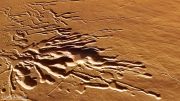

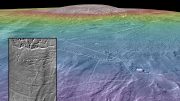
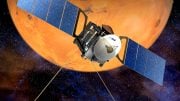

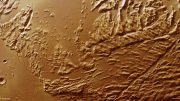
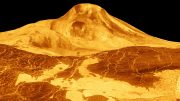

Be the first to comment on "Mars Express Uncovers Collapsed Chains of Craters on Giant Martian Volcano"